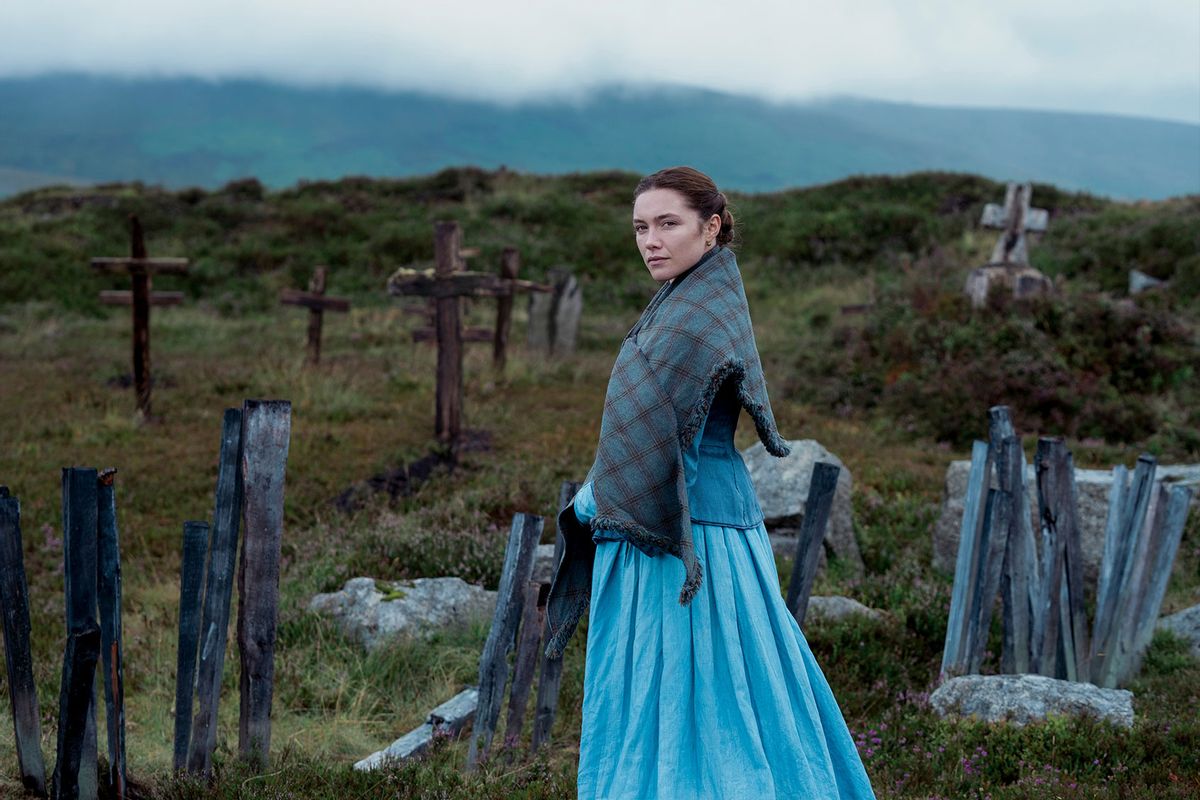In October, U.S. tabloid the New York Post reported somewhat gleefully that the early 2000s trend for “heroin chic” is back. After a brief period of limited body diversity, it reported, runways were once again full of extremely young, wraith-like white women.
Visible bones, once photoshopped away to avoid public outcry, are once again the order of the day. While the reports framing the last few years as a “brief, shining moment of body positivity” are exaggerated, the shift towards a more extreme bodily ideal is concerning, with media commentators and eating disorder specialists raising concerns about its effect on viewers’ mental and physical health.
For some time now, media academics and commentators, such as myself, have noted western media cultures’ hunger for stories of self-denial in pursuit of bodily perfection. As film critic S.R. Benedict argues in her viral 2019 essay Everyone is Beautiful and No-one is Horny, celebrity narratives have tended to focus on tales of discipline, self-control and denial.
Celebrities like Kim Kardashian, once noted for their “bootylicious” curves, have showcased dramatic weight loss. Fasting and “clean eating” are the social media trends of the moment, along with Ozempic, an injectable diabetes drug that causes dramatic weight loss at the cost of distressing and potentially dangerous side effects.
“The Wonder” and our fascination with disordered eating
This morbid fascination with the suffering of the young and beautiful is not new. Sebastian Lelio’s Netflix film, “The Wonder,” based on the novel by Irish writer Emma Donoghue, is inspired by the “fasting girls” of the 19th century, young women whose “miraculous” starvation attracted much attention from an emerging mass media.
These cases have been seen as early instances of disordered eating. But Donohue’s novel suggests that the 19th century, with its emerging mass media and its repressive attitude to women’s bodies, can be reimagined to shed light on our own time.
In a controversial opening scene, the camera pans over a warehouse interior to a film set, while an Irish-accented woman’s voice tells us that what we are about to see is a story, but that we should empathize with the characters nonetheless.
Throughout the film, we are reminded of the importance of the stories we tell, how they shape our lives, determining what is possible and imaginable. “The Wonder” chimes with feminist media research that asks us to think about the ethics of the stories we tell about body weight, shape and eating, and the way we consume these stories.
Making the invisible, visible
In the main narrative, an English nurse – Lib Wright, in a typically incandescent performance by Florence Pugh – arrives in a remote Irish village which seems to conform to all the stereotypes of English representations of Ireland. It’s dirt poor, priest-ridden, with a bleak green-grey landscape and low, dim interiors echoing the image of a “backwards village.”
In this unlikely setting, a miracle has apparently occurred. A young girl, Anna O’Donnell, has lived without food for four months, apparently subsisting entirely on the power of prayer (or “manna from heaven”).
The girl and her mother appear locked in a spiral of mutual deception. If the girl is revealed to be a fraud, they will lose everything. Lib, recently returned from the Crimea with trauma of her own, has been summoned to keep watch on the girl and report any foul play. She is there “only to watch.”
But Lib, too, is disregarded and sidelined. Her well-meaning attempts to “save” Anna, including by force feeding, are met with frustration as she realizes that she, too, is powerless and will need to work against the establishment if she wants to make a difference.
This is a world where local people’s struggles are invisible, except for Anna, whose extreme behavior has made her an object of both veneration and horror. The village is thronged with “sightseers and gawkers.” There are articles in the Irish and British national press, the former awed, the latter satirical.
Anna is subject to medical surveillance by a nun, Sister Michael, and by Doctor O’Brearty who imagines becoming famous for discovering the secret to eternal life. At one point he suggests that her body is converting sunlight into nutrients “like a plant,” an idea that seems absurd until we remember that celebrity diet guru Gwyneth Paltrow has promoted something called “integrative photosynthesis” as part of an extreme “cleansing” diet.
The power of our stares
The film’s setting may be historical, but its overarching theme – of a world where food and bodily pleasure are seen as polluting, even as millions starve – is not.
Anna is an object of fascination because she appears to survive, even to thrive, in a world defined by hierarchy and deprivation. Denied a voice, she must tell a story using the only medium available to her: her body.
Feminist scholars have shown that the desire to “gawk” at starving bodies reflects the tensions and anxieties at stake in capitalism and patriarchy. By attracting attention to the fascinating spectacle of her self-denial, Anna forces the spectator to confront the reality of exploitation and abuse that has been erased from the public narrative.
It is a limited strategy, and one which almost kills her. By proposing a different ending to Anna’s story, the film asks: what does our fixation with suffering tell us about the things we repress, the stories we don’t want to hear?
Instead of comparing ourselves to a “barbaric,” “backward” past, “The Wonder” asks us to reflect on the fasting girls of our own time, and what they might tell us about our need to fetishize some forms of suffering, while silencing others.
Debra Ferreday, Senior Lecturer in Sociology, Lancaster University
This article is republished from The Conversation under a Creative Commons license.

















Discussion about this post